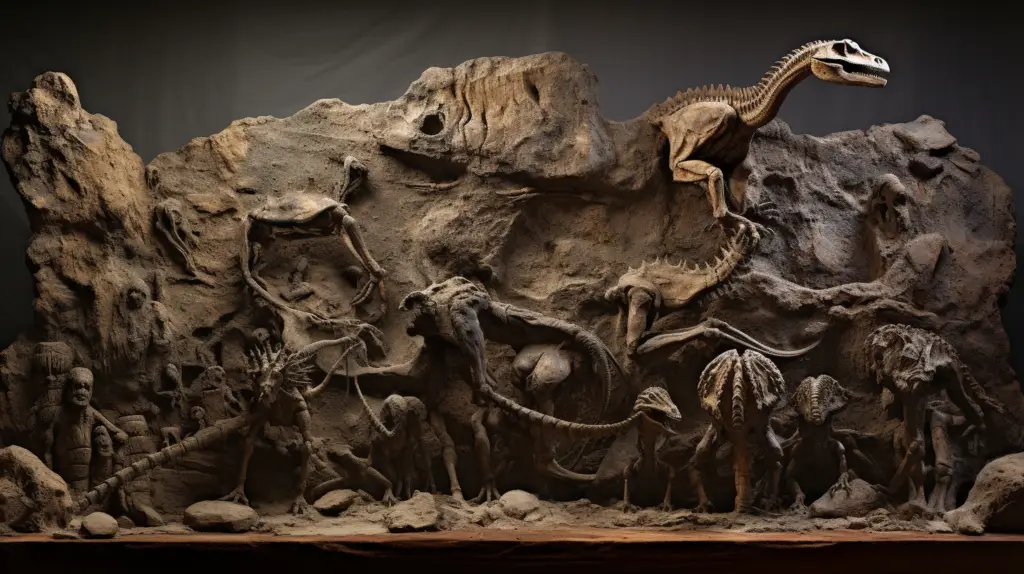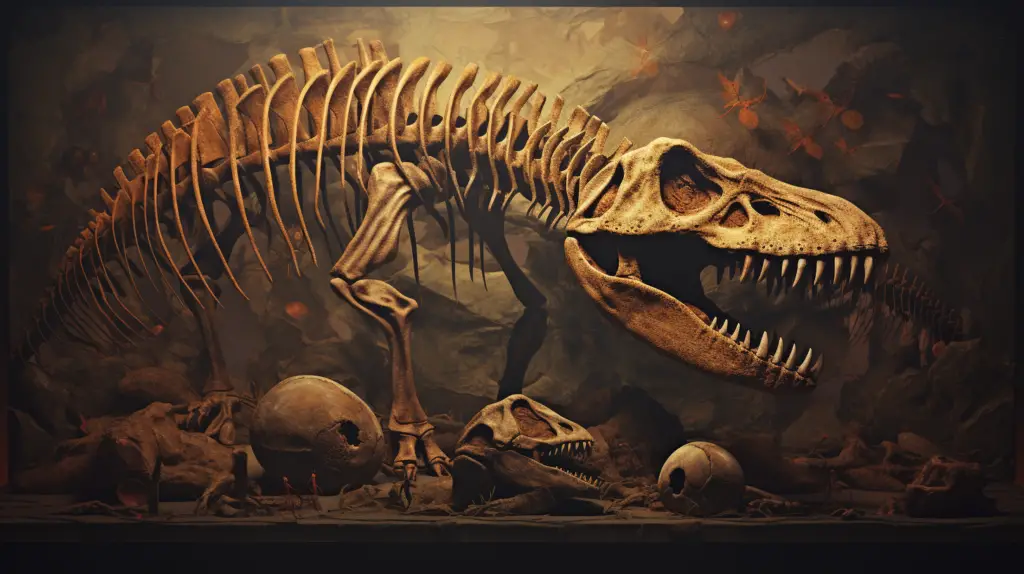The world of paleontology has fascinated mankind for centuries. From the mammoth bones of yesteryears to the towering skeletons of the Tyrannosaurus rex, fossils allow us a glimpse into the Earth’s distant past. Today, this ancient world is more accessible than ever as dinosaur fossils are available for sale, but it’s crucial to approach this market with knowledge and caution.
Why Buy Dinosaur Fossils?
- Educational Value: Authentic fossils can be an incredible teaching tool, helping students and enthusiasts understand the prehistoric world and evolution.
- Collection: Many people are drawn to the allure of possessing a tangible piece of Earth’s ancient history.
- Investment: Rare and well-preserved fossils can appreciate in value over time, making them a unique investment.
Legal and Ethical Concerns
Before buying a fossil, it’s essential to understand the legal and ethical considerations.
- Laws and Regulations: Many countries have stringent regulations about the collection, sale, and export of fossils. Ensure that the fossil has been legally obtained and can be legally owned and/or resold in your jurisdiction.
- Provenance: Ensure that the seller can provide documentation about the fossil’s origin, legality, and history.
- Scientific Value: Some fossils may have significant scientific value. Ethically, these should be studied rather than sold to private collectors.
READ MORE: 25 Interesting Facts About The Egyptian Pyramids
Where to Buy Dinosaur Fossils
- Reputable Dealers: Established fossil dealers who have been in the business for years can offer authenticity guarantees.
- Auctions: Some high-end auction houses, like Christie’s or Sotheby’s, periodically feature fossil sales.
- Museums: Occasionally, museums deaccession items, offering them for sale to the public.
- Online: Websites and platforms like eBay might have listings, but be extra cautious about authenticity and provenance when buying online.
Authenticity and Valuation
- Appraisal: If you’re considering a high-value purchase, get the fossil appraised by a professional.
- Study: Familiarize yourself with the type of fossil you’re interested in. Knowing the difference between a genuine fossil and a replica or fake is vital.
- Documentation: Always ask for documentation of authenticity and provenance.
Caring for Your Fossil
- Handling: Handle fossils with care; even rock-hard fossils can be fragile.
- Display: Display fossils away from direct sunlight, which can cause fading or degradation.
- Storage: Ensure fossils are stored in stable conditions, with consistent temperature and humidity.
READ MORE: 20 Amazing Facts About Black Cats: History, Myths, Superstitions
How much does a dinosaur fossil cost?
Over the years, several notable dinosaur fossils have been sold for astounding prices. Some of these fossils are virtually complete, while others might be a single bone or fragment that holds significant scientific or historical importance. Here are some notable sales:
- Sue, the T. rex: Perhaps the most famous dinosaur sale of all time, Sue is the most complete Tyrannosaurus rex ever found. In 1997, Sue was sold to the Field Museum in Chicago for over $8.36 million, a record for a dinosaur fossil.
- Dueling Dinosaurs: In 2020, an incredibly well-preserved fossil of a ceratopsian and a theropod, seemingly locked in combat, was acquired by the North Carolina Museum of Natural Sciences. While the exact price wasn’t disclosed, the value of the fossil was estimated at several million dollars.
- Allosaurus Skeleton: In 2020, a nearly complete Allosaurus skeleton was sold at auction in Paris for over €3 million (over $3.3 million USD at the time).
- Baby Stegosaurus: A rare baby stegosaurus fossil sold in Britain in 2013 for £3 million (approximately $4.7 million USD at the time).
- Mongolian Tarbosaurus: A Tarbosaurus bataar, a relative of the T. rex found primarily in Mongolia, was sold in 2012 in New York for over $1 million. However, it was later returned to Mongolia due to questions about its legal provenance.
- Triceratops Skull: In 2019, a large Triceratops skull was auctioned off in Paris for more than €275,000 (about $300,000 USD at the time).
These prices highlight the significant commercial interest in dinosaur fossils, but they also underscore the importance of ensuring the legal and ethical considerations in the trade. It’s crucial for potential buyers to understand the source of the fossils and ensure that they were obtained and are being sold legally.
READ MORE: 25 Mind-Blowing Facts about China That You Didn’t Know
Countries with significant dinosaur fossil discoveries
Numerous countries around the world are renowned for their significant dinosaur fossil discoveries. Here’s an overview of some of the most prominent ones:
- United States
Regions such as the Badlands of Montana and South Dakota, Wyoming’s Morrison Formation, and Utah’s Cleveland-Lloyd Quarry are iconic for their Jurassic period fossils. The U.S. has given the world famous discoveries like Tyrannosaurus rex, Triceratops, and Stegosaurus. - Canada
The province of Alberta is particularly famous, with Dinosaur Provincial Park being one of the world’s richest dinosaur fossil locales. Discoveries include large carnivores like Albertosaurus and horned dinosaurs like Styracosaurus. - Argentina
Patagonia, in southern Argentina, is a treasure trove of dinosaur fossils, having produced unique finds like the massive Argentinosaurus and the carnivorous Giganotosaurus. - Mongolia
The Gobi Desert has been a significant source of fossils for over a century, with discoveries such as Velociraptor, Protoceratops, and the first known dinosaur eggs. - China
Regions like Liaoning Province have garnered attention for their beautifully preserved feathered dinosaur fossils, bridging the gap between birds and dinosaurs.
Discoveries include Sinosauropteryx and the four-winged Microraptor. - Brazil
Chapada do Araripe in northeastern Brazil has given us a unique window into the Cretaceous period, with discoveries like the fish-eating Spinosaurus relative, Irritator. - Portugal
Sites in the Lourinhã Formation have provided important European dinosaur specimens, including Lourinhanosaurus and several sauropods. - Australia
Australia’s unique prehistoric fauna includes both dinosaurs and massive marsupials. Discoveries like the theropod Australovenator and the armored Minmi have been found in regions such as Queensland. - Tanzania
The Tendaguru Formation has provided significant insights into African dinosaurs, with specimens like the massive Brachiosaurus and Kentrosaurus. - Madagascar
This island nation off the southeastern coast of Africa has produced unique discoveries, such as the predator Majungasaurus and the long-necked Rapetosaurus.
Each of these countries contributes a unique chapter to the story of Earth’s ancient past, offering a glimpse into the varied and diverse environments in which dinosaurs thrived. Furthermore, ongoing excavations and research in these and other regions continue to expand our understanding of the Mesozoic era and its inhabitants.
READ MORE: 150 Interesting Facts About Mexico | All You Need To Know
Conclusion
Buying a dinosaur fossil is a thrilling experience, allowing one to own a piece of our planet’s vast history. However, the prospective buyer must approach the market with a discerning eye, ensuring they’re making an ethical, legal, and informed purchase. By understanding the intricacies of the trade, one can treasure these ancient wonders for generations to come.




